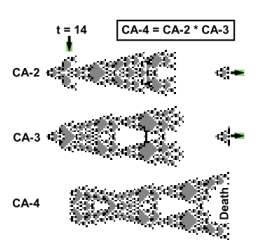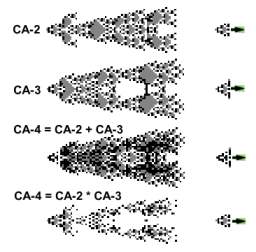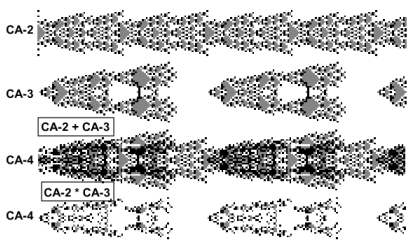 |
Process interaction
We start with a four CA system. CA-1 is the stem process which generates two oscillating and
transient processes, CA-2 and CA-3. At time = 14 the states of CA-2 and CA-3 are multiplied. The is an initial state of CA-4,
which continues to exist
for a while and then dies.
 |
In the next experiment,
both CA interact continually. During each step CA-2 and CA-3 are added together, and the result
becomes a CA-4 state (CA-4 = CA-2 + CA-3).
In the following
experiment CA-2 and
CA-3 states are multiplied and the result becomes a CA-4 state (CA-4 =
CA-2 * CA-3).
 |
 |
solution[2, 25, 11]; solution[3, 25, 9]; If [ j == 14, a[[4]] = a[[2]] * a[[3]]; go[100]; solution[2, 25, 11]; solution[3, 25, 9]; If [ j > 0, a[[4]] = a[[2]] * a[[3]]; go[100];